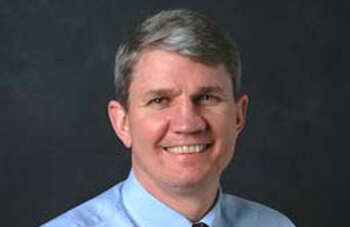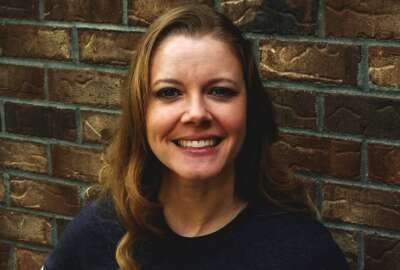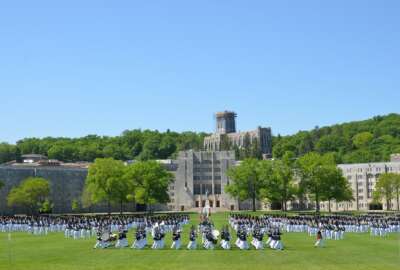
Aspiring Navy sailors combine their STEM educations with an ocean project
On the theory it's never too early to get people to think about military careers, the Naval Sea Cadet Corps program encourages interest in naval topics for...
Best listening experience is on Chrome, Firefox or Safari. Subscribe to Federal Drive’s daily audio interviews on Apple Podcasts or PodcastOne.
On the theory it’s never too early to get people to think about military careers, the Naval Sea Cadet Corps program encourages interest in naval topics in students 10 years old through high school. For one recent program success, Federal Drive with Tom Temin spoke with National Director of Education with the Naval Sea Cadet Corps, Richard Quest — and the program coordinator, John Woods.
Interview transcript:
Tom Temin: National Director of Education of the US Naval Sea Cadet Corps, Richard Quest. Mr. Quest, good to have you on.
Richard Quest: Thank you very much, Tom, pleasure to be here.
Tom Temin: And also the program coordinator, retired Lieutenant Commander John Woods. Mr. Woods, good to have you on.
John Woods: Thanks for having me.
Tom Temin: So first of all, just give us the orientation here. What is the US Naval Sea Cadet Corps all about?
Richard Quest: Sure. US Naval Sea Cadet Corps is a Youth Leadership Program affiliated with the United States Navy and US Coast Guard. And what we do is we build leaders of character. The program’s for 10 to 18 year old young men and women. We have approximately 400 units that serve about 11,500 cadets around the country in 46 states, Guam and Puerto Rico. We are a nonprofit organization, affiliated very closely with the United States Navy and Coast Guard.
Tom Temin: Good to have the Coasties included in there too, because they’re at sea also. And this is in public schools and private schools, it’s available throughout?
Richard Quest: It is. We’re actually an after school program. Our cadets meet once a month generally. But then we have many advanced training opportunities throughout the course of the year. Some of these trainings will include just the very basics, recruit training, there’s all sorts of STEM opportunities, robotics, leadership, there’s field operations, SEAL training, scuba, international exchanges, military police training, seamanship, seaboard operations. You name it, if the Navy and the Coast Guard are offering this, we’re offering a modified version of that that’s hands on for these 10 to 18 years old.
Tom Temin: I may contribute the canoe that’s been hanging in my garage the past 15 years. And the program we’re talking about today has to do with oceans, oceanography, buoys, and sensors. John, tell us about this program.
John Woods: Yeah, so the Arctic buoy program this is in its second iteration. It’s really great because it highlights the hands on STEM activities that these cadets are doing. So they’re actually building sensors and then deploying the sensors out into the environment that they’re trying to measure. In this case, it’s the Arctic. So they’re collecting weather observations, ocean observations, how the ice is moving on the ocean. And then that data is actually being used into the global weather prediction models. So this is real data that’s getting collected and put into real models.
Tom Temin: So the students made buoys or what do they actually do?
John Woods: Yeah, so they built these little sensor board. So you know, a temperature sensor, barometric pressure sensor, a GPS.
Tom Temin: Like a circuit board?
John Woods: A circuit board, yep,. And all the sensors were integrated onto that circuit board. And then the key to all this was the satellite transmitter, right, so that you collect the data on this self contained buoy, and then you beam the data up to a satellite link over the Iridium network. And then that’s how the data gets transferred on to the operational users.
Tom Temin: So they soldered and screwed together these things and so forth., and they were obtained at parts, I guess. And what about the buoy that it’s in that has to presumably float and be waterproof?
John Woods: Yeah, so the really unique opportunity they had was to design their own buoy hauls. So they were designing them in computer software. And then we were actually printing a few of them using 3d printers, which is really awesome use of the new technology.
Tom Temin: And how big are they?
John Woods: So they’re about basketball size, so they’re manageable so one person can deploy these. Right now we’re working up in Utqiagvik, Alaska, which is on the North Slope of Alaska. So a single person can deploy one of these using a snow machine or walking out on the ice.
Tom Temin: Got it. So it sits in a certain place, there’s a chain and an anchor on it so it’s not in the deep ocean. Or am I wrong?
John Woods: We actually place these on the ice so we can measure the ice movement. And the really unique thing about the Arctic, right, so the buoy has to survive both sitting on the ice, and then when the ice melts floating in the water. So that’s a really unique characteristic of this design.
Tom Temin: That sounds like a really neat, fun thing to have some kids do. And Rick, what has been the effect of pandemic and the separation of all of this had on the program and the ability to see and interact with the students?
Richard Quest: Well, we started this program this last year and the pandemic hit right mid program, but John and his team were working with Dr. Ignatius Rigor out of the University of Washington, we’re working with a professor out of the University of Maryland. And they adapted very quickly this last year, but mid program we had to move to a completely virtual environment. This year, we simply planned for it. And John and his team just pulled it off in outstanding fashion. So imagine now 43 cadets spread around the country meeting virtually several weekends throughout the course of the program. And this is our reality now. And so we’re able to pull it off. Cadets were sent their own kits, their own Arduino boards, red boards, and so forth to actually compile everything and pull it all together. And this is the reality of the situation. So nobody skipped a beat. Of course, we’d prefer to be in person. Part of the program is we want to get cadets actually up into the Arctic, that was not possible this last year or this year. But going forward, as we continue the program, we hope to be able to do that. So really, John and his team did an outstanding job and didn’t really miss a beat.
Tom Temin: Wow. So there is the opportunity than in the future for them, for some of the cadets at least, to be able to take their basketball size sensors and bring them physically to wear them where they are going be to be deployed.
Richard Quest: That’s right, absolutely. And I do have to say John, I checked the data this morning, we still have from last year, we still have one buoy transmitting data over a year later, which is just outstanding. So the idea is that cadets get up there and actually be part of that international Arctic buoy program and deploy those buoys and actually be part of the research team.
Tom Temin: Is the limiting factor of battery inside of it. That is to say, is there a chance they can go retrieve them, recharge it and keep it going?
John Woods: Yeah, so the batteries are usually the limiting factor, the batteries ore being crushed or possibly even destroyed by a polar bear. We’ve had instances where some of our buoys, the basketball size is kind of perfect for a polar bear to say, hey that looks interesting, and go over and play with it. So, yeah ideally, we get about six months to a year, which is a good long run, but sometimes we lose them overnight, even the day after we deploy.
Tom Temin: And again, looking at the larger program here, do you get the sense or do you have the statistics to show that this might lead a substantial number of the students to pursue a Navy or Coast Guard career?
Richard Quest: Yes, we do track those stats. And there are approximately 1,000 cadets a year that graduate from our program. Of those, 650 choose to join one of the military branches every year. Over 450 specifically will enlist or commission to the United States Navy or Coast Guard. And then an additional 300 are off to two and four year colleges and universities, many joining an ROTC type program. What’s really interesting, and we’re very proud of this, is anywhere from 10 to 12% of the incoming class at the United States Naval Academy is made up of sea cadets every year. So that’s a very, very exciting trend for us. I would also say that one of the partnering opportunities that we have, and one of our sponsors to help us kind of get the word out, there’s the Navy League in the United States. And our headquarters is right there in Arlington, in that national headquarters. And so that’s one of those partnerships that helps us to kind of grow all of this.
Tom Temin: Well if you can get them to go to the Sea Air Space Conference every year, what an array of hardware and stuff there is to see it that show.
Richard Quest: Precisely. And so we’re working this year with John and his team. And we’ll be there actually that Sunday, believe it’s August 1, there’s a STEM exposition, our sea cadets will be there. And we will have some of those Arctic buoys right there. They’re going to be in the harbor right there, where they hold it, National Harbor, they’re gonna have a couple of those for people to see and work with them to provide that.
Tom Temin: And John, that must be especially satisfying to you the ones that go to the academy, because if I understand that you are also an academy graduate.
John Woods: Yeah, definitely. I’m an alumni and I actually still live in Annapolis, which is outstanding, we still have a strong tie to the Naval Academy. What I really enjoyed this last session we did, we held some office hours where we allowed the cadets to talk kind of on professional knowledge, future career options. And just the sheer excitement in their discussion in their questions, their future plans, both at the academy or even serving their country and other other aspects or going off to college and doing cool science was really neat to see.
Tom Temin: Retired Lieutenant Commander John Woods has been our guest. Thanks so much for joining me.
John Woods: Thank you.
Tom Temin: And Richard Quest, thank you very much.
Richard Quest: Our pleasure. Thank you very much.
Copyright © 2025 Federal News Network. All rights reserved. This website is not intended for users located within the European Economic Area.
Tom Temin is host of the Federal Drive and has been providing insight on federal technology and management issues for more than 30 years.
Follow @tteminWFED
Related Stories





